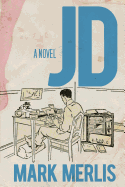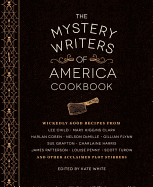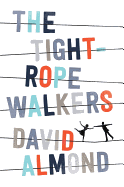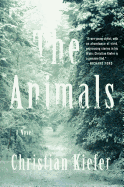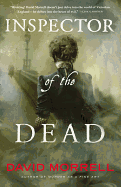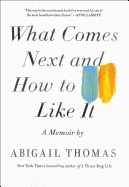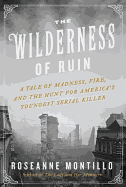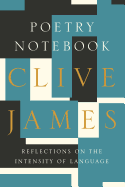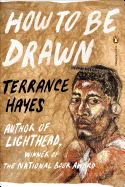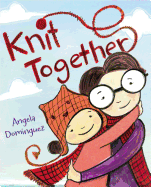Tuesday, March 31, 2015
I'm fixated on Claudia Rankine's Citizen (Graywolf, $20), a monumental book of poetry that pivots at the nexus of criticism and art, and deservedly bears a newly minted National Book Critics Circle Award. My obsession must in part be attributed to my newfound love of prose poetry--concise and evocative windows into the soul.
 I can't talk about prose poetry, though, without mentioning Toronto's Emma Healey, who has lately been gracing readers with lovely pieces of poetry that feature rap artist Drake at their center. (My dear, dear Drake.) Magnificently sharp and droll, Healey is nothing if not proud of her Canadian culture and kin. In "Heritage Moments," from her book Begin with the End in Mind (Arbeiter Ring, $12.95), she writes, "Our passenger rail system is named after a preposition, though we do not think about this too much and neither should you."
I can't talk about prose poetry, though, without mentioning Toronto's Emma Healey, who has lately been gracing readers with lovely pieces of poetry that feature rap artist Drake at their center. (My dear, dear Drake.) Magnificently sharp and droll, Healey is nothing if not proud of her Canadian culture and kin. In "Heritage Moments," from her book Begin with the End in Mind (Arbeiter Ring, $12.95), she writes, "Our passenger rail system is named after a preposition, though we do not think about this too much and neither should you."
Sarah Fran Wisby's concise, piercing book The Heart's Progress (Plain Wrap Press, $10), is as much novella as it is poetry. "The heart bears the absence of your mark, but barely," begins a series of prose poems that detail the journey one squishy, conflicted heart takes to discover its true calling.
Prose poetry is itself a conflicted name, a paradox, but one begging to be read. Mary Ruefle's "A Certain Swirl," one entry in her marvelous collection The Most of It (Wave Books, $11.95), imagines a sentence on a chalkboard in an empty room: "the sentence thought it was a fine sentence, a noble, thorough sentence... but if no one read it, how could it be sure?"
Up until a few months ago I never read prose poetry. All it took, though, were bright shining beacons like these to turn me toward it. --Dave Wheeler, associate editor, Shelf Awareness
JD
by Mark Merlis
One might find the works of Jonathan Ascher, the fictional '60s radical at the center of JD, shelved near Allen Ginsberg or Abbie Hoffman. His is a loud, dissenting voice, evidenced in his homoerotic magnum opus from which the book draws its name. Quieter, in this fictional world, is the voice of Ascher's widow Martha, who, years after her husband's death, begins to parse through the diaries he left behind. Between a few innocuous-looking pages lies the Pandora's box at the heart of this story, one that forces Martha to question the realities of marriage, motherhood and self.
Mark Merlis (Man About Town), whose previous novels have won the Los Angeles Times Book Prize and the Lambda Literary Award, dissects the Ascher family with surgical precision, peeling back the couple's facades to reveal two people struggling against unmet expectations both internal and social. In his diaries, Jonathan expounds on the seedy bathhouses and late-night trysts that were two of the few options for a gay man in midcentury New York City, while Martha remembers a life that pivoted on her husband's choices, suffocating in its narrowness.
JD's most masterful element is its treatment of these two characters, both of whom spent their lives groping for contentment like one trying to find a light switch in a darkened room. A great writer offers not just tight prose but also insight, a series of probing questions that extend from the fictional world into the real one. JD asks who its characters were, and in doing so, forces the reader to confront the intricate and fascinating politics of identity. --Linnie Greene, freelance writer
Discover: Many years after a '60s New York writer's death, his widow confronts their tumultuous marriage and private identities through his journals.
The Animals
by Christian Kiefer
In his great poem "The Bear," Galway Kinnell refers to "the chilly, enduring odor of bear." In Christian Kiefer's outstanding novel, The Animals, that enduring odor rises up in Majer, a blind bear with "eyes filmed in milk, the pupils twin gray pools." Bill Reed lovingly cares for Majer and other animals--a wolf, raccoons, porcupines, martens, raptors and more--at the North Idaho Wildlife Rescue. Kiefer's second novel, after the well-received The Infinite Tides, goes deep into the dark, poetic places Kinnell's poem explored.
Kiefer uses classic noir technique to portray a man trying to escape his past in order to atone for it. Through a series of flashbacks we learn that Bill (Nat back then) was in Reno 12 years earlier, and then in a Carson City prison. It's now 1996, and he's happy to be living a fairly isolated existence in the woods. He has a nice girlfriend, Grace (the local veterinarian), a new name and he's enjoying taking care of the animals he has saved, "brought back from whatever deprivations had been enacted upon them," whether collision, firearms, fences, traps, poisons. All that changes when he gets a phone call from an old Nevada friend just out of prison after 12 years. He wants his share of "the money," and he's coming to get it.
Kiefer's juxtaposition of past and present, the lost with the found, a life without love with one filled with it gives this novel depth and feeling. If you love great fiction--and animals--the raw emotional power of this book will leave you devastated. --Tom Lavoie, former publisher
Discover: A heartbreaking tale of one man's quest for redemption, with exquisite prose and a contemporary noir feel.
Mystery & Thriller
Inspector of the Dead
by David Morrell
Prolific author David Morrell tried something new when he wrote a period mystery, Murder as a Fine Art, in which the famous, opium-eating Victorian author Thomas De Quincey starred as the detective. His second installment in the series, Inspector of the Dead, is another winner.
It's 1855, one year after De Quincey's detective debut. The Crimean War is in its second year and has caused major shakeups in the British government. Out of an early London evening's fog emerges a man who sneaks into Lord Cosgrove's home--"clutching his cane, he proceeded with his great work. Memories needed to be prodded. Punishment needed to be inflicted." He murders the staff and then Cosgrove himself--strangling the lord in his library, leaving tapered silver pens protruding from each eye.
Later, Lady Cosgrove is brazenly murdered in her personal pew at St. James's Church, her throat slit from ear to ear. The only thing that links the brazen murders is a piece of paper bearing the name Edward Oxford, clutched by each corpse. De Quincey suspects that the "motive was revenge for an injustice." In 1840, there had been an assassination attempt on the life of Queen Victoria made by Edward Oxford, a man involved with the underground organization Young England, which aimed to abolish the monarchy.
De Quincy and his team soon deal with more vicious murders by this mysterious serial killer, and Morrell provides enough information about him, his unfortunate background and his motives to add depth to the story. It's a rich thriller, told with exquisite detail, amidst a moody, pervading tone of gloom. --Tom Lavoie, former publisher
Discover: A foggy gaslit Victorian mystery investigated by the elegantly drawn, opium-eating detective Thomas De Quincey.
Food & Wine
The Mystery Writers of America Cookbook
by Kate White, editor
Food and drink often play a starring role in mystery novels, whether the victim is felled by a poisoned meal or the detective has a whiskey habit (we're looking at you, Philip Marlowe). Many cozy mystery series feature recipes in each book. In The Mystery Writers of America Cookbook, more than 100 "plot stirrers" offer up a wickedly delicious array of recipes--dishes both they and their characters love.
"Food isn't used just as a weapon," writes editor Kate White (Eyes on You) in the book's introduction. "It defines character." These dishes certainly do. The peanut-butter-and-pickle sandwiches favored by Kinsey Millhone, star of Sue Grafton's Alphabet series, are pedestrian but surprisingly precise (Jif Extra Crunchy--no substitutions), while Lee Child's trenchant instructions for black coffee ("not some syrupy milk drink") are both entertaining and revealing. Other contributors offer tried-and-true family favorites, such as Mary Higgins Clark's Game Night Chili, or culinary creations inspired by their characters, such as J.A. Jance's Sugarloaf Café Sweet Rolls.
Occasional sidebars written by White provide entertaining literary tidbits, such as the origin of the phrase "red herring" and an exploration of poison in the novels of Agatha Christie. In a delightful meta-mystery twist, there's even a pancake recipe from Richard Castle, fictional mystery novelist and star of the TV series Castle.
With tempting recipes, engaging stories behind each dish and the occasional mouthwatering photo, this cookbook proves beyond any reasonable doubt that food and mystery are a winning combination. --Katie Noah Gibson, blogger at Cakes, Tea and Dreams
Discover: A wickedly delicious collection of recipes beloved by popular mystery writers and their characters.
Eating Viet Nam: Dispatches from a Blue Plastic Table
by Graham Holliday
Graham Holliday's first encounter with the "real" Vietnam was in the form of a tough and spongy pig's uterus, plunked down upon a blue plastic table and served with a pint of beer. A student/friend goaded him with an open, chewing mouth, and thus begins Holliday's visceral, witty, snarky and altogether revelatory exploration and deconstruction of Vietnamese street food, going beyond bánh mì and pho to get at the atomic heart of its cuisine and its culture.
Holliday's love of Vietnam begins with a photograph of Hanoi he finds in a travel book in 1991. Dissatisfied with life as a corporate paper-pusher, he decides to leave the dead-end job in his hometown of Rugby, England, and depart for Vietnam (by way of Korea) as an English teacher in 1996. When Holliday finds himself standing at the same exact spot of the photo, drinking in a food scene that sends his "nasal dials juddering into the red-zone," he is hooked. Armed with a rusted red bicycle nicknamed "the Chinese piece of sh*t," Holliday embarks on his own personal food safari, following his nose through the hidden alleyways of Hanoi and Saigon, tasting testicles and entrails, devilish moonshine from cobras, bears and lizards, along with more sedate fare like iced coffees and teas, relishing the sensational bursts of flavor from bun cha, hu tieu and bánh tráng phơi sương. Along the way he elaborates on the subtle differences between North (austere) and South (earthy, herb-rich and sweet), coaxes food-prep tidbits from suspicious food vendors and falls in love with a beautiful and equally adventurous Vietnamese expat.
Holliday's sensible, down-to-earth advocacy of street food will no doubt draw comparisons with Anthony Bourdain (whose imprint at Ecco is this book's publisher); but as the guy who started it all with his Vietnam-focused blog, Noodlepie, Holliday is an original. --Nancy Powell, freelance writer and technical consultant
Discover: The ultimate food safari on the streets of Vietnam from the Noodlepie blogger.
Biography & Memoir
What Comes Next and How to Like It: A Memoir
by Abigail Thomas
If the experiences Abigail Thomas (A Three Dog Life) writes about in her memoir What Comes Next and How to Like It were in a piece of fiction, readers might find it difficult to believe the story. Her bizarre series of events begins when she discovers her long-time friend Chuck is having an affair with her daughter, Catherine. To add to the strangeness, Thomas waits a month to tell her husband and, a week after that, he walks the dog, gets hit by a car, suffers traumatic brain injuries and never recovers. Not only does Thomas lose her spouse, but she no longer has her best friend Chuck to turn to in her grief, or any sense of connection to her daughter throughout that difficult period.
Time did eventually soothe the anger and betrayal she felt toward Chuck. These snippets of prose are full of love, humor, anger and a certain amount of uncertainty as Thomas ponders what life really is all about and what happens after one dies. Intertwined with these reflections on living and facing the unknown are commentaries on painting on glass using oil-based paints, Thomas's interactions with her dogs and the grief she felt when they died, and the range of emotions she felt when Catherine was diagnosed with a serious illness.
Although most of these passages are very short and read almost like journal entries, the overall picture Thomas conveys is that the deep, soul-level relationships make all the highs and lows of life bearable. --Lee E. Cart, freelance writer and book reviewer
Discover: Short essays by the author of A Three Dog Life reveal a life full of love, laughter, heartache and pain.
History
The Wilderness of Ruin: A Tale of Madness, Fire and the Hunt for America's Youngest Serial Killer
by Roseanne Montillo
In The Wilderness of Ruin: A Tale of Madness, Fire and the Hunt for America's Youngest Serial Killer, Roseanne Montillo (The Lady and Her Monsters) concentrates on a gripping era of Boston's history. In the late 1800s, a series of seemingly unrelated events are her focus: the Great Fire of 1872, which broke out despite the efforts of a fire chief who saw dangers parallel to Chicago's Great Fire the previous year; the literary work of Herman Melville, who was increasingly fascinated by the concept of insanity; and, at the heart of this book, the crimes and incarceration of a boy named Jesse Harding Pomeroy.
Montillo follows Pomeroy's childhood, his early crimes of torture against younger boys and the murders of two small children for which he would be convicted, in a burned-out city struggling with modernization and increasing class divisions. Throughout the investigation and trial, Pomeroy exhibits characteristics that would later have termed him a psychopath, and his lawyers' attempt to plead insanity is part of the early establishment of precedent in such cases. Meanwhile, Melville experiments in his literature with the labels of monomania and moral insanity, and Dr. Oliver Wendell Holmes applies his medical expertise to the possible role of sensational dime novels in Pomeroy's crimes, and weighs in on the question of executing the boy, who was 14 years old at the time of his conviction. Using detailed research, Montillo braids together these cross-disciplinary subjects--urban development and class, fire and murder, the definition of insanity and the standards of judicial punishment--into a story that has the momentum of a thriller. --Julia Jenkins, librarian and blogger at pagesofjulia
Discover: A dramatically told history of murder, madness and urban growing pains.
Social Science
Terms of Service: Social Media and the Price of Constant Connection
by Jacob Silverman
Terms of Service: Social Media and the Price of Constant Connection, Jacob Silverman's incredibly detailed review of social media (by which he means everything from social networks like Facebook, Google+ and Twitter to sharing sites and apps like Uber and Airbnb), is stunning in both its breadth and depth. Silverman offers readers a comprehensive overview, not only of how social media grew to its current level of importance but also how it continues to thrive: namely, by selling user information to advertisers. In this landscape, he argues, users of these social platforms sacrifice privacy in the name of convenience, efficiency and friendship. He explores the myriad ways that Facebook and similar platforms have changed our culture; the growing role of photography in every part of our day-to-day lives; the complex surveillance systems set up to track users across the web; and the relatively new movement against anonymity online.
In the introduction to Terms of Service, Silverman is direct about where his allegiances lie in today's rapidly evolving social landscape: "with those who don't have power, who don't have anything to sell." In other words, the users of social media, not the corporations behind the social media tools we use. Throughout the book, Silverman advocates not for readers to abandon social media altogether but to use each social media tool with the knowledge of the price paid for its use. If you're not paying in dollars, you're likely paying with personal information, and Terms of Service is an important reminder that it doesn't necessarily have to be that way--complete with ideas on how we can push for change. --Kerry McHugh, blogger at Entomology of a Bookworm
Discover: An incredibly detailed and eye-opening account of the state of social media, and the cost of constant connection.
Poetry
Poetry Notebook: Reflections on the Intensity of Language
by Clive James
The multi-talented and sometimes curmudgeonly Australian-British journalist, critic and poet Clive James (Cultural Amnesia), now 75, is dying. He has leukemia and says that he's embarrassed to still be here. But it has given him time to write some more poems and pull together this personal Poetry Notebook, a collection of reflective pieces he has written over the last decade, most for Poetry magazine.
James has always been a lover of poetry, works that have the "intensity of language that marked the real difference between poetry and prose." These short pieces revisit the poets he has loved most; those he once loved (Ezra Pound and his Cantos--a "nut-job blog before the fact"); and those he doesn't much like--he's a stickler for form, meter and rhyme, and he doesn't think a bunch of loose thoughts on a page equal poetic "intensity."
He writes with enthusiasm about his favorites--Yeats, Frost, Auden, Wilbur, Larkin--and his favorite poems, like Yeats's "All Soul's Night," "one of the greatest poems written in the 20th century." Here, too, are takes on some fine poets who aren't household names: Louis MacNeice, Les Murray, Michael Longley and Stephen Edgar ("sheerly beautiful"). And a tip of his hat to John Updike's verse, mostly light but "dauntingly accomplished."
Included are many "Interludes," entertaining brief updates where James can criticize his past self. And throughout, James the book lover comments on the tactile pleasure of holding and reading from a slim hardback collection and wisely advises readers to acquire a poet's original collected poems, not a weaker modern one that's poorly organized. James talks about poetry "as if it were the most exciting thing in the world, which indeed it is." --Tom Lavoie, former publisher
Discover: A practical, witty and trenchant assessment of 20th-century British and American poetry.
How to Be Drawn
by Terrance Hayes
Once you're "drawn" into Terrance Hayes's latest collection of poetry, How to Be Drawn, prepare to be puzzled, surprised, educated and exhilarated. He has honed his craft with four previous books, including the 2010 National Book Award-winning Lighthead. An artist (he has illustrated most of his book covers) and a poet, he employs visual, often lyrical, language. His subject matter is wide ranging: race, pop culture, music and identity.
This book contains 30 poems, 10 each in three sections: "Troubled Bodies," "Invisible Souls" and "A Circling Mind." One additional poem, "Ars Poetica for the Ones Like Us (after Mark Rothko & Leonard Cohen)," a sort of epilogue, brings the book to a close. This is more than a mere collection of poems. Each poem is a contribution to the book's overall structure. As he writes in this last piece: "the poem could be/ Thought of as a house..../ From inside the poem I was asked to map/ The world outside and the adventure to unfold."
Hayes loves to invent formal constraints. One poem about Etheridge Knight is in the form of a crime report. Another is a Q&A, but only the A's are there, the Q's missing. The powerful "How to Draw an Invisible Man," about what he finds inside Ralph Ellison's corpse, is one long, labyrinthine sentence:
I discovered his body had been hoarding...
...tendons of syntax
unraveled from his bones and intestinal cavities,
the froth of singing, stinging, stinking ink,
reams of script fraught with the demons,
demagogues, and demigods of democracy....
Hayes just keeps getting better. --Tom Lavoie, former publisher
Discover: A poetry collection from National Book Award-winner Terrence Hayes that will surprise, entertain, teach and sing to you.
Children's & Young Adult
The Tightrope Walkers
by David Almond
David Almond's latest blends the hallmarks of many of his most powerful novels--the camaraderie of men in Kit's Wilderness, the dangerous play of boys in Clay, the damaged ones of Heaven Eyes who live at the edge of society.
Narrator Dominic Hall, son of a caulker in the shipyards, describes his childhood bond with Holly Stroud, daughter of a designer of ships. Almond cannily reports the comments and body language of the adults around Dominic to convey the societal divide. At first, Dom and Holly play together, blissfully ignorant of the impediments to come. Adolescence progresses and both become infatuated with wild, dangerous Vincent McAlinden. Vincent's mastery of violence and tenderness pushes people away and reels them in, yet he cannot escape his fate, tied to the shipyards. Dom rises above his father's vocation because of his academic excellence and superior writing. Even his English teacher recognizes Dom's gifts: "Be careful with your talent," he tells Dom. "Don't let it damage you. Don't let it take you too far from the people you love."
Almond's magnetic narrative conveys the sounds and heat of the shipyards, the smells of the circus tent where Dom and Holly see the tightrope walkers, the quality of the light at sunset after a satisfying day. And he tells of the tightrope humans walk between social divides, sanity and insanity, faith and doubt, friendship and sex, what we're born to, what we can rise above--and what traps us. Mesmerizing. --Jennifer M. Brown, children's editor, Shelf Awareness
Discover: Another extraordinary feat from David Almond, set in the shipyards of Northern England, sure to please his fans and win him new ones.
Knit Together
by Angela Dominguez
In her warm mother-daughter story, Angela Dominguez (Let's Go, Hugo!) demonstrates the combined efforts of collaboration and creativity.
"This is me," says the girl narrator, "I love to draw." She makes crayon portraits of her Chihuahua, a flower and more (including a picture of Dominguez's bird star Hugo). "Mom doesn't draw. Mom knits." The narrator wishes she could knit because "you can wear it!" On a cool day at the beach, mother, daughter and dog model the fruits of the woman's labors: matching red scarves and a sweater for the pooch. Back at home, the girl imagines things she could knit if she knew how (e.g., "finger puppet gloves"), so "I ask Mom to show me." A series of vignettes depicts the girl's attempts; frustrated, she colors the underside of a table. "Mom says it's okay," then shows her daughter how her drawings inspire her knit patterns. That gives them an idea. A sundrenched double-page spread of mother and daughter (plus their dog) on the beach sets the scene for "inspiration time. Mom says sometimes the best ideas come when your brain is resting." Another series of vignettes chronicles the creative process: "There are slow starts, and squiggles, and knots," she says, "But then I have it!"
The mother permits her daughter to explore her ideas, only stepping in when she's about to give up. After a process of trial and error, the rewards of the narrator's success are even greater. Dominguez pulls all of the details together into the revelation on the final pages. --Jennifer M. Brown, children's editor, Shelf Awareness
Discover: A mother and daughter combine their talents into a standout collaboration.
| Advertisement Meet belle bear! |


